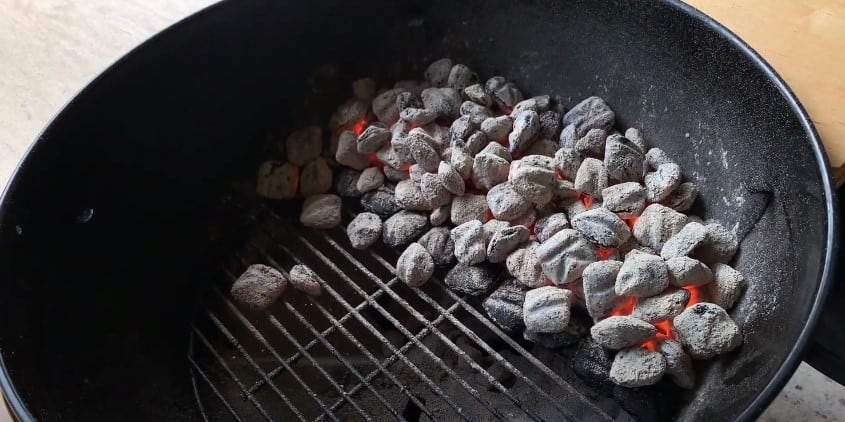
To ensure you serve the juiciest steaks possible at your next cookout, use two-zone grilling. Whether you’re searing high-quality steaks or want to cook a variety of meats for a large party, two-zone grilling can help you produce excellent meats. Although it might sound complicated, it’s relatively simple and achievable on most types of grills, including gas, charcoal, electric, and wood.
At your next party, use two-zone grilling to impress your guests by achieving the perfect tenderness in your meat cuts, or feed everyone faster by grilling multiple types of food at the same time. Two-zone grilling can also help prevent flare-ups if you’re working with a high quality gas grill.
1. What Is Two-Zone Grilling?

Two-zone grilling gives you the best temperature control possible on a grill by dividing your grill into two different areas. The two regions consist of an indirect heat zone and a direct heat zone. The direct heat zone has the burners turned on and is producing heat that directly cooks whatever food is in the zone. The indirect zone remains off, but the food placed in that area still cooks via the indirect heat coming off the other side of the grill.
Direct heat grilling is best used for searing, high heat, and quickly cooking thinner foods. This method’s idea is that the meat or vegetable won’t have time to burn on the outside before it cooks all the way through.
Indirect heat grilling provides a slow increase in temperature that allows larger foods to cook all the way through without the exterior becoming burnt in the process.
You might sometimes hear two-zone grilling referred to as dual zone grilling, which is just another name for the same method of cooking.
Grillers everywhere swear by two-zone grilling. They love the flexibility it gives you, making it possible to cook everyone’s steaks to their ideal temperature and how simple it is to master.
2. What Are The Benefits of Two-Zone Grilling?

There are huge advantages to adopting the two-zone grilling method, including increased temperature control, providing a safety zone for flare-ups, enhanced flavor, and versatility.
Increased Temperature Control
Having the option to switch between two different temperature zones lets you perfect your meals during the grilling process. If you’re slow-roasting a cut of meat and decide it needs a quick searing, you can easily pop it over to the direct heat zone for a few minutes and then move it back once you have a perfect sear.
Enhanced Flavor
Using different grilling temperatures allows you to get the most flavor out of your food. All meats have different water and fat contents that react differently to high and low heat. By switching between direct and indirect zones throughout the cooking process, you can tailor the grilling experience to each type of meat or each person’s cut of meat so that you get the ideal result.
Versatility
Accommodate everyone’s needs at the dinner table with your ability to cook at different temperatures on one grill. Commonly, people have different preferences for how well their meat should be done, and with two-zone grilling, it’s easier to get it right for everyone.
3. Which Foods Should I Cook In Each Zone?
If you’re new to two-zone grilling, you need to get the hang of which foods are best cooked where. Typically, burgers, fish, vegetables, thin steaks, lean ground beef, seafood, or pork chops will do well over direct heat. Anything you can cook quickly benefits from exposure to direct heat.
Thicker cuts of meat require slower cooking. Because of how long they need to cook, they will burn if left on direct heat. With a low heat approach, the warmth can slowly circulate around the thick meat or large vegetable and gently cook it all the way through without the exterior becoming too crispy. Whole chickens, roasts, turkey, meat with bones, or thick, whole vegetables benefit from indirect heat after a quick sear on the high heat.
4. Two-Zone Grilling: Gas Vs. Charcoal Grills
While the concept is the same no matter what grill you’re working with, there is a difference in how you prepare for two-zone grilling depending on what you’re working with. For a charcoal grill, pour your lit charcoal only into one side of the grill, then place the grate on top. Wood burning grills operate the same way, requiring you to put lit kindling exclusively to one side, leaving the other side off or cool.
For working with a gas grill or electric grill, simply turn on only one or two burners on the same half of the grill. You can start cooking on the direct heat side while the grill gets up to temperature and then move thicker cuts of meat over to the indirect heat zone once enough warmth is generated from the lit side of the grill.
Any setup where you can turn on half of the burners or grill surface and leave the other off can be used for two-zone grilling.
5. Time to Switch to Two-Zones
Switching to this grilling method will change the way you cook and improve your precision, enhance the flavor of your food, and allow you to tend to your guests’ individual dietary preferences.
It’s simple in theory, but it will take some practice to refine your skills. Start by understanding how to set up the two zones based on the type of grill you own. Once you’ve got the zone temperatures under control, the rest of the work is subjective. Knowing when to pop something over the direct heat for quick searing and when it requires a slower roasting is not a natural instinct, but you will become more comfortable at two-zone grilling with practice.
Read more about BBQ or Grilling:

